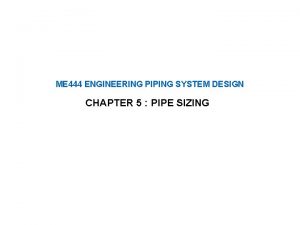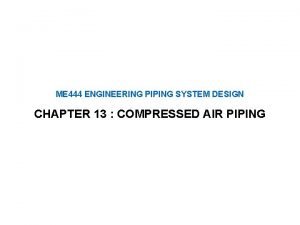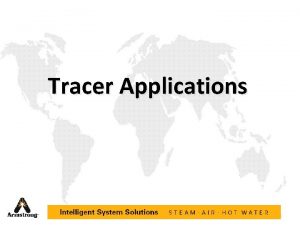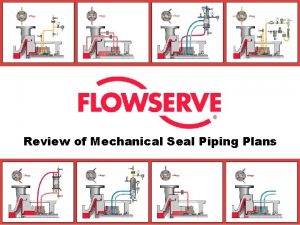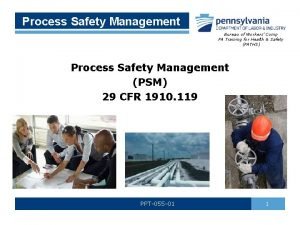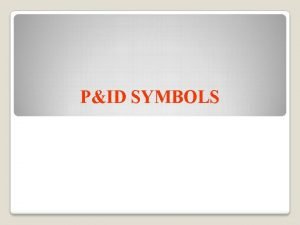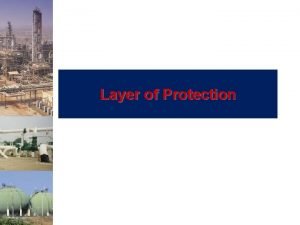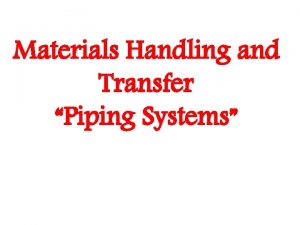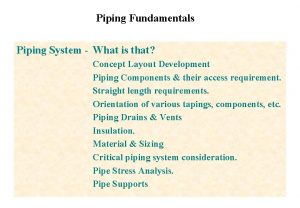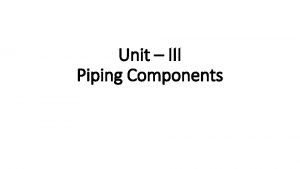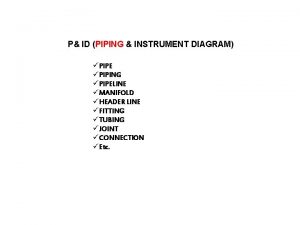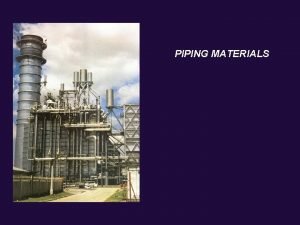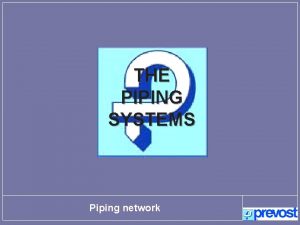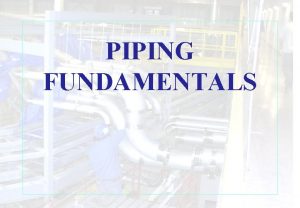Innovative piping system in COOL DH Senior Product









- Slides: 9

Innovative piping system in COOL DH • Senior Product Manager: • Klaus Grønnegaard Lauridsen • klgla@logstor. com

Low temperature District Heating - norms and standards AS-IS: Standard pipe systems today is preinsulated steel pipes. › Steel service pipe, minimum 30 years service life, continuous operation 120 0 C and peak temperature of 140 0 C › Minimum requirements to the preinsulated components and system is defined in the European standards TO-BE: With a low temperature system running between 55 -85 0 C the calculated theoretical life time of the pipe system is beyond 1000 years. › For a low temperature 4 th generation District Heating system this is over engineered and too expensive. We need to start pushing for updated standards to fit the real needs

“Bubbles/new ideas” that is being evaluated and proven/tested by field test New service pipe material on flexible pipes. PE-RT Collect and reuse heat loss from straight pipes – multi pipe system Better insulation properties New connection methods on flexible pipes– welding Alarm wires for leak detection together with plastic service pipes

New developed service pipes for flexible pipes. PE-RT Aim: New service pipe material on flexible pipes. PE-RT • Flexible pipes that can be welded together in 100 m length as well in 12 m length. • With oxygen and water vapour barrier. • Can be in different pressure classes and temperature limits like PEX – here 10 bar, max. 65 0 C • Service pipe dimensions up to D 110 mm. • D 32 mm and below: a multilayer Alu. PERT pipe – within the flexible standard EN 15632 • Above D 32 mm: a mono layer Alu. PERT pipe. Fully tested according to the flexible standard – but outside anyway

New connection methods for flexible pipes– welding New connection methods on flexible pipes– welding Aim: • Usage of existing press and compression couplings available on marked today • Pipes that can be welded together • Butt/mirror welding – single pipes • Electrofusion welding. Still in progress as no supplier today offer this in the right material! Still under development:

Development of better insulation properties Aim: Better insulation properties • Improve the heat loss by new insulation properties with lambda reduction of 0, 001 - 0. 002 W/m. K • We have reached this – equal to an average heat loss reduction on up to 8 -10 % compared to today. – Lambda 0, 020 W/m. K

Alarm wires for leak detection together with plastic service pipes Aim: • Offer leakage alarm system for pipes with plastic service pipes • Ensure performance and minimum heat loss for the full lifetime Impedance curves

Collect and reuse heat loss from standard straight steel pipes Collect and reuse heat loss from straight pipes – multi pipe system Aim: • New pipe system with heat recovery pipes connected to a heat pump to regain heat-loss • Different alternatives and positions have been simulated together with COWI • In final design the simulation show a positive energy recovery balance together with ground heat from surrounding soil

Main challenge is the existing EN Standards How far are we to a real alternative to preinsulated steel pipes? Main challenge here is the existing EN Standards!
